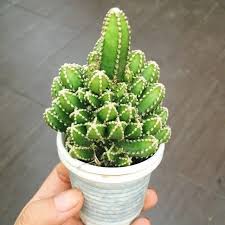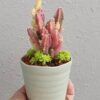Traditional Craft Villages of Feng Shui Artifacts in China: A Deep Dive into Ancient Practices and Modern Relevance

China’s rich cultural heritage is deeply intertwined with the principles of Feng Shui, a centuries-old practice that seeks to harmonize individuals with their surrounding environment. Feng Shui, which translates to “wind-water,” is rooted in ancient Chinese philosophy and emphasizes balance, energy flow, and the alignment of natural forces. Over time, this practice has permeated many aspects of Chinese life, including architecture, design, and even business.
One of the most fascinating aspects of Feng Shui is the use of artifacts and objects that are believed to bring good fortune, prosperity, and protection to their owners. These objects, whether they are statues, ornaments, or symbolic items, play a crucial role in the application of Feng Shui principles. For centuries, these artifacts have been handcrafted by skilled artisans in traditional craft villages across China. In this article, we will explore the unique craft villages that specialize in the production of Feng Shui artifacts, the ancient techniques used to create these objects, and how these villages continue to thrive in the modern world.
The Cultural Significance of Feng Shui Artifacts
Feng Shui artifacts are more than just decorative items; they are believed to influence the flow of Qi (Chi), the life force or energy that flows through all living things. The correct placement of these artifacts in homes, businesses, or offices can enhance the positive flow of energy, while improper placement can disrupt it and lead to negative outcomes. Feng Shui artifacts are often used to bring luck, wealth, health, and protection, depending on their design, material, and placement.
Some of the most common Feng Shui artifacts include:
- Lucky Bamboo: A symbol of prosperity and good fortune, the lucky bamboo is often placed in homes or businesses to attract positive energy.
- Dragon and Phoenix Statues: These powerful symbols represent harmony and balance, with the dragon symbolizing strength and power and the phoenix symbolizing renewal and vitality.
- Wealth Ships: These decorative ships, often filled with coins or jewels, are believed to attract wealth and success.
- Money Toad (Three-Legged Toad): This figurine, often depicted with a coin in its mouth, is considered a symbol of wealth and good fortune.
- Laughing Buddha: Known for his jolly demeanor and large belly, the Laughing Buddha is believed to bring happiness, wealth, and good health.
The crafting of these artifacts is not just a form of art but also a spiritual practice. Each artifact is created with careful attention to the materials, design, and symbolism, ensuring that it aligns with the principles of Feng Shui.
The Role of Traditional Craft Villages in Feng Shui Artifact Production
For centuries, traditional Chinese craft villages have been the heart of artifact production, preserving ancient methods of crafting and passing down skills through generations. These villages are known for their specialized production of not only decorative art but also Feng Shui artifacts, each made with a deep understanding of Feng Shui’s symbolic meanings and energy flow.
1. The Craft Villages of Jingdezhen (Jiangxi Province)
Known as the “Porcelain Capital” of China, Jingdezhen has been a center for porcelain production for over 1,000 years. The city’s artisans are renowned for their high-quality ceramics, which are often used in the creation of Feng Shui artifacts. Porcelain dragons, phoenixes, and Buddha statues are just some of the pieces crafted in Jingdezhen, where each item is molded, fired, and painted with great attention to detail.
The village is famous for its ancient kilns, which are still used by local artisans today. Craftsmen often incorporate Feng Shui principles into their porcelain creations, ensuring that each artifact is made with the proper energy flow in mind. Jingdezhen’s porcelain products, including vases, figurines, and plates, are often sold as Feng Shui items, treasured for their beauty and believed to bring positive energy into the home.
2. The Stone Carving Villages of Quyang (Hebei Province)
Another key area for Feng Shui artifact production is the town of Quyang in Hebei Province, known for its stone carving tradition. Quyang artisans specialize in carving intricate stone sculptures, which often feature animals, mythical creatures, and figures from Chinese folklore. Stone carvings of dragons, lions, and tortoises are common Feng Shui items that are believed to bring protection, stability, and wealth.
The traditional stone carving techniques of Quyang have been passed down through generations, with artisans using ancient chisels and tools to create detailed sculptures. These carvings are not just decorative—they are imbued with symbolic meaning that aligns with Feng Shui principles. For example, a dragon carved from stone is considered to bring power and good fortune, while a tortoise represents stability and longevity.
3. The Jade Carving Villages of Hetian (Xinjiang Province)
Jade is one of the most revered materials in Chinese culture, symbolizing purity, longevity, and wisdom. The Hetian region in Xinjiang Province is famous for its high-quality jade, and its artisans are renowned for their jade carving skills. For centuries, jade Feng Shui artifacts such as jade dragons, jade pendants, and jade Buddha statues have been crafted in this region.
In Feng Shui, jade is believed to have the ability to absorb negative energy and protect the home or office from misfortune. The process of jade carving is extremely meticulous, as it requires the artisan to work with a soft but durable material. Each jade piece is carefully crafted to capture the spirit of the stone and channel its positive energy into the artifact.
4. The Wood Carving Villages of Hunan Province
Hunan Province is known for its wood carving tradition, where artisans create intricate sculptures, including those used in Feng Shui practices. Carved wooden dragons, phoenixes, and horses are some of the most popular Feng Shui items produced here. Wood is a material associated with growth and vitality in Feng Shui, making it a popular choice for creating artifacts that bring prosperity and health.
In addition to traditional carving, lacquered wood items are also common, where artisans use a technique of applying layers of lacquer to create smooth, glossy finishes. These lacquered wood Feng Shui artifacts are highly valued for their beauty and their ability to channel energy in a way that promotes balance and good fortune.
5. The Silk and Textile Villages of Suzhou (Jiangsu Province)
Suzhou, famous for its silk industry, is another region where artisans produce Feng Shui-related textiles. Embroidered silk tapestries depicting auspicious symbols such as peonies, lotus flowers, and dragons are often used in Feng Shui practices. These textiles are believed to bring harmony and wealth into the home or workplace.
The art of silk embroidery in Suzhou has been practiced for over 2,000 years, and the city is home to many traditional embroidery workshops. The intricate designs are often infused with symbolic meanings—like the lotus, which represents purity and spiritual growth in Feng Shui, or the peony, a symbol of wealth and prosperity.
Modern Adaptations of Traditional Craft Villages
While these craft villages have deep roots in traditional Chinese culture, they are not immune to modern changes. In recent years, the rise of e-commerce and global interest in Feng Shui has led many artisans to adapt their craft to contemporary needs. Online marketplaces and international trade have made it easier for people around the world to access these traditional Feng Shui artifacts.
However, despite these changes, many artisans in these villages continue to preserve their traditional techniques. Craft villages in China have become cultural tourism destinations, where visitors can learn about the process of creating Feng Shui artifacts and even try their hand at crafting their own. Many workshops now offer hands-on experiences for tourists, where they can create their own lucky charms or decorative pieces under the guidance of skilled artisans.
Feng Shui Artifacts in the Global Market
As Feng Shui continues to grow in popularity worldwide, the demand for authentic, handmade Feng Shui artifacts has surged. Today, these artifacts are found in homes and businesses not only in China but also in many countries across the globe. Whether it’s a dragon statue for good luck, a money toad for wealth, or a jade pendant for protection, these artifacts are valued for their beauty as well as their symbolic meanings.
The production of Feng Shui artifacts has become a global industry, with traditional Chinese craft villages playing a vital role in providing high-quality, authentic pieces. In recent years, artisans have also started to blend modern materials with traditional designs, making the artifacts more accessible to a global audience while maintaining their deep cultural significance.
Conclusion: Preserving the Tradition of Feng Shui Artifact Production
The traditional craft villages of China continue to produce some of the most intricate and meaningful Feng Shui artifacts in the world. These villages, with their rich history and expertise, play a crucial role in preserving the ancient art of Feng Shui while adapting to the demands of the modern world. Whether it’s through the creation of porcelain statues in Jingdezhen, jade carvings in Hetian, or wood carvings in Hunan, these artisans continue to bring good fortune and positive energy into the lives of those who appreciate their work.
As Feng Shui gains recognition worldwide, the value of these traditional craft villages will only increase. Their dedication to preserving ancient practices while embracing modern innovations ensures that the art of Feng Shui artifact production will continue to thrive for generations to come. For those seeking to incorporate the principles of Feng Shui into their lives, these traditional craft villages offer an authentic, meaningful way to do so—one piece at a time.

